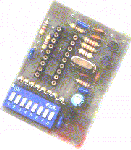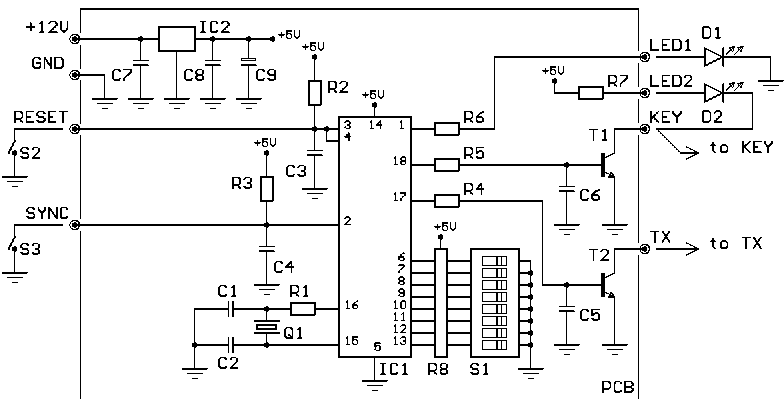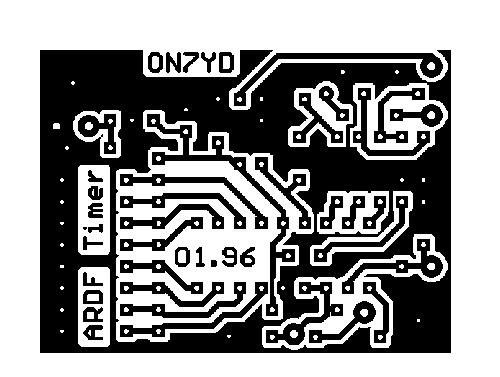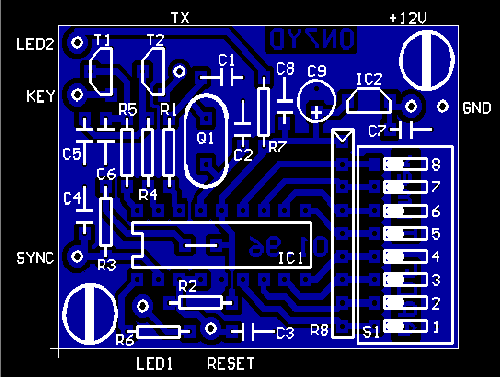ARDF
 timer
timer
 timer
timer
| Partlist | Scematics | Functional description |
| PCB | Download | DIP switch selections |
| IC1 : PIC16C54XT * | IC2 : 78L05 | Q1 : 3.2768MHz | T1/2 : BC547c |
| C1/2 : 22p | C3/4 : 100n | C5/6 : 100p | C7/8 : 100n |
| C9 : 10µF/10V | R1 : 470 | R2/3 : 4k7 | R4/5 : 3k3 |
| R6/7 : 1k8 | R8 : 8x47k | S1 : DIP switch (8) | D1/2 : LED 3mm |
| Sw 1 | Sw 2 | Sw 3 | Identification |
|---|---|---|---|
| off | off | off | MOE (1st min. of 5 min. cycle) |
| on | off | off | MOI (2nd min. of 5 min. cycle) |
| off | on | off | MOS (3rd min. of 5 min. cycle) |
| on | on | off | MOE (4rd min. of 5 min. cycle) |
| off | off | on | MOI (5th min. of 5 min. cycle) |
| on | off | on | MO (continue) |
| off | on | on | MOE (1st min. of 2 min. cycle) |
| on | on | on | MOI (2nd min. of 2 min. cycle) |
| Sw 4 : 30 min. | Sw 5 : 1 hour | Sw 6 : 2 hours | Sw 7 : 4 hours | Sw 8 : 8 hours |
 The scematic diagram is included in the download package.
back to top of this page
The scematic diagram is included in the download package.
back to top of this page

 The exact dimensions of the PCB are 1.9 x 1.4 inch (48.3 x 35.6 mm).
The exact dimensions of the PCB are 1.9 x 1.4 inch (48.3 x 35.6 mm).